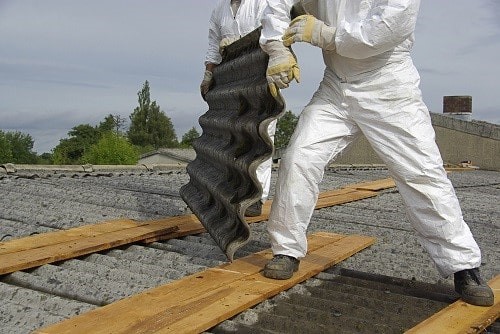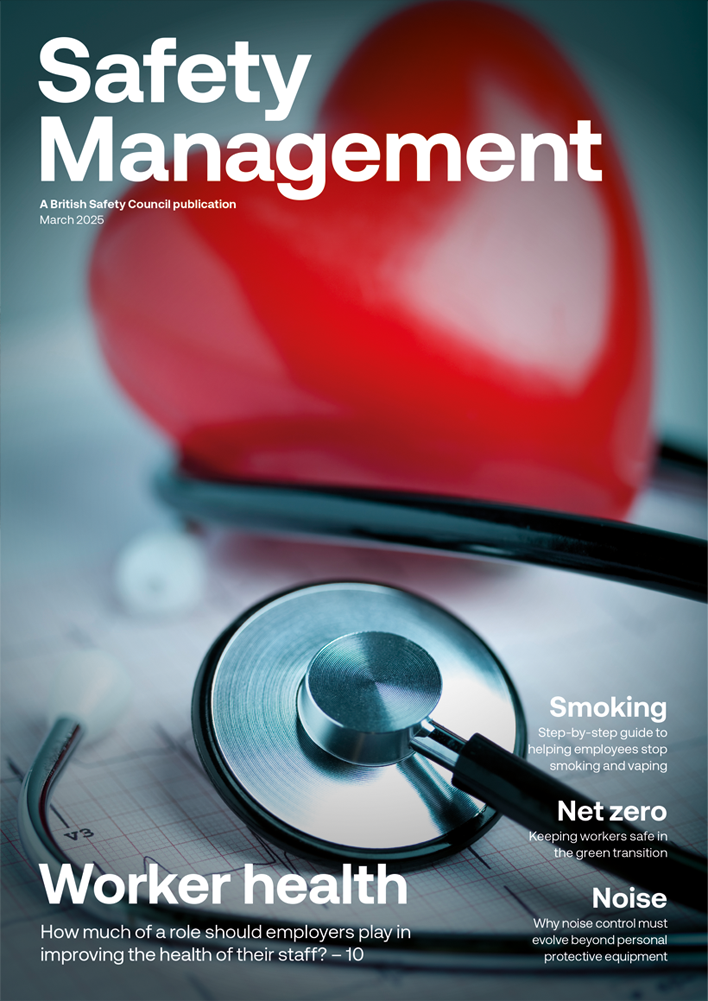We are all too familiar with the impact and legacy issues resulting from the widespread use of asbestos in the UK.
Features
Weighing up our past mistakes in regulating asbestos
The current inquiry by MPs on the House of Commons’ Work and Pensions Committee into the Health and Safety Executive’s (HSE’s) approach to asbestos management has raised many important questions about the UK’s past and current regulatory approach.
Having been involved in the asbestos consultancy industry for over 40 years, and seen many changes during that time, I know many, if not all of them were meant to make things better. However, while they may have been made with the best intentions, not all the changes achieved their intended outcomes.
A look back at the history of asbestos regulation in the UK shows that, as with many other areas, it has evolved based on increased awareness, knowledge and technology.
 Colette Willoughby is Chairperson of the National Organisation of Asbestos Consultants (NORAC)
Colette Willoughby is Chairperson of the National Organisation of Asbestos Consultants (NORAC)
In the first half of the 20th century, we were won over as a country by the wonders of this apparently magic mineral and all its fantastic uses. So much so that we imported far more of this material than other countries. The import of raw asbestos increased more than seven-fold between 1930 (24,000 tonnes) and 1975 (174,000 tonnes), with a peak in 1964 (187,000 tonnes). Until 1999, when it was finally prohibited, six million tonnes of asbestos had been imported into the UK.
It is easy to see why this was the case. Asbestos was so versatile and its properties made it ideal to be used for fire protection, insulation, reinforcement and many other purposes. Indeed, there were over 3,000 known uses for it in the UK.
However, at the same time as we were using asbestos so widely in our homes, schools and workplaces, our regulators were also beginning to realise that this modern ‘miracle’ material came with some serious downsides. While the valuable properties of asbestos were not in question, the evidence was growing on the negative impact it can have on our health.
 Removing asbestos can be expensive and time-consuming. Photograph: iStock
Removing asbestos can be expensive and time-consuming. Photograph: iStock
The presence of asbestos-containing materials (ACMs) does not in itself constitute a risk to health, but the risk is significantly increased when those materials are disturbed or damaged. The disturbance or damage to ACMs results in the release of tiny microscopic asbestos fibres into the air. When the fibres are inhaled, they can lead to asbestos-related disease.
Diseases such as mesothelioma (an asbestos-related cancer most commonly found in the lining of the lungs or the abdomen), lung cancer and asbestosis (a chronic inflammatory and scarring disease affecting the tissue of the lungs), can result decades after exposure to the ACM fibres.
One of the biggest challenges with asbestos was the length of time it took for the impacts on people’s health to appear and be understood.
In fact, in many cases it was 30–40 years or even longer before reliable data on the health impact that could be used to shape our regulatory control of the substance was available.
This helps to explain why attempts to regulate and manage this fatal material lagged behind and took so long to materialise. But in reality, we took a far too reactive approach.
The first attempts to regulate the use of – and workplace exposure to – asbestos in the UK began in the 1930s, with basic controls aimed at minimising exposure in factories. A series of piecemeal changes followed until the Asbestos Regulations of 1969 went further than before by requiring employers in many industries to seek to prevent the inhalation of asbestos fibres for the first time.
The Health and Safety at Work Act in 1974 also placed general duties on employers to ensure the health and safety of workers. But it wasn’t until 1985 that the UK implemented its first regulatory ban on the importation and use of brown and blue asbestos.
Since the 1980s, we have seen further regular changes to the UK’s regulatory controls. Each one promising to bring about a reduction, and eventually an end, to the horrendous death toll. There are currently more than 5,000 asbestos-related deaths per year in the UK. These consist of approximately 2,400 cases of mesothelioma, a similar number of lung cancers and around 500 of asbestosis. The current statistics reflect the legacy of past exposure to asbestos, and asbestos-related deaths are expected to continue at similar annual rates for more years to come.
The UK is not alone in suffering the devastating consequences of such widespread asbestos use. It is however noted as having the highest annual death rate proportionate to the population size. For example, America, like the UK, imported and used vast quantities of asbestos. America has a similar number of deaths due to mesothelioma per year as that of the UK, however, the population of America is some five times greater than that of the UK.
Of course, hindsight is a wonderful thing and it’s easy to look back over time and be wise after the event. Sadly, though, this has been precisely the UK’s approach to managing asbestos: to act and then wait to see over the following decades if what we did was the right approach.
In the meantime, we have continued to expose people to the dangers of asbestos and the death toll continues to grow.
As previously mentioned, asbestos only poses a risk to health when the fibres become airborne and are inhaled. In the UK, building owners have a specific legal duty to ensure the asbestos materials within their building stock are adequately managed to prevent any of the fibres becoming airborne. This sounds easy, but in a world full of commercial and financial pressures asbestos can often be a problem that building owners and developers don’t want to address and allocate adequate money, time and resources to.
Removing asbestos can be expensive and time-consuming. Given the time lag for the development of asbestos-related diseases there is no imminent threat to life and this can influence people’s attitudes to how they manage the material. Legionella bacteria, from certain water systems in buildings, is an airborne health hazard like asbestos but the ill health effects tend to appear quite rapidly and as a result the risk is generally managed much better than asbestos.
Education is a big factor in creating a safer environment where asbestos is concerned. Since the introduction several years ago of the duty to ‘manage asbestos’ in buildings, (as required by the Control of Asbestos Regulations), more emphasis has been placed on managing the danger the material poses to a site’s occupants and visitors. However, there are concerns that a significant proportion of dutyholders for the affected buildings and locations lack awareness and understanding of exactly what they must do to meet their duties and protect people from exposure.
Successful organisations usually excel at managing critical business areas, like their workforce, suppliers, contracts and clients. But what about the premises where they are based? How well to do they manage the risks arising from them?
It’s often argued that a simple solution would be to remove all the asbestos present in the UK’s building stock. However, setting aside factors like the cost of full-scale removal and who would meet it, there are practical problems with this approach. For instance, even if a wholescale removal of all remaining asbestos was undertaken there are concerns that challenges like ensuring the full identification of all asbestos (or suspected asbestos), would mean some would inevitably be missed and remain in-situ. Also, the number of landfill sites around the globe that accept asbestos has been significantly reduced, meaning there would be challenges disposing of all the extra removed material.
The answers to many of life’s problems are seldom simple and this is no different. Asbestos is a complex issue that isn’t going to be solved within our lifetimes. The only way we can effectively reduce the risk from asbestos is through better management of not only the products that contain this mineral but also the buildings that contain them. In short, building owners need to take responsibility for the hazards that exist within their premises – including asbestos.
Colette Willoughby will be speaking at Safety, Health & Wellbeing Live in Manchester on 23-24 May on ‘The Regulation & Management of Asbestos: Have we got it right?’
She is Chairperson of the National Organisation of Asbestos Consultants (NORAC)
FEATURES

Why quality data is essential when using AI for occupational safety and health management
By Dr Bob Rajan-Sithamparanadarajah. Safety Groups UK (SGUK) on 01 April 2025
Artificial intelligence-powered models, systems and technology have the potential to significantly improve the management of occupational safety and health (OSH) risks, but it is vital that OSH practitioners understand the limitations and dangers of using AI to protect people at work.

Sustainable aviation fuels: how do we put the SAFety in SAF?
By Megan Hine, Draeger Safety UK on 01 April 2025
Sustainable aviation fuel is seen as having great potential to reduce the greenhouse gas emissions from air transportation. However, as with other emerging renewable energy sources, the safety risks arising from the production, processing and storage of these biofuels can be accompanied by new risks and will require careful management from the safety industry as utilisation increases to meet the Government’s mandatory targets.

Why social sustainability should be a priority for health, safety, environmental and compliance professionals
By Agnes Chruszcz, IEMA (Institute of Environmental Management and Assessment) on 01 April 2025
By embedding social sustainability principles into their policies and operations, organisations can not only improve quality of life for their employees, workers in their supply chains and the communities they interact with, but boost their business resilience, productivity and reputation.



